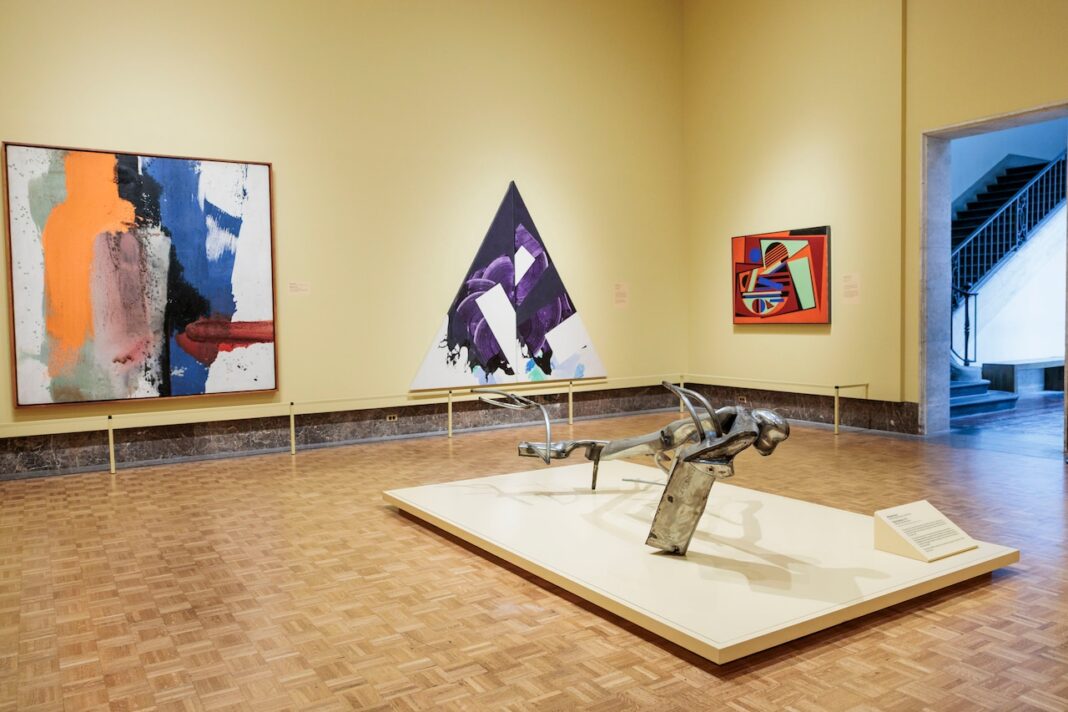A New Era for African American Art at the Detroit Institute of Arts
DETROIT – The Detroit Institute of Arts (DIA) has recently unveiled a remarkable upgrade to one of the nation’s oldest and most extensive collections of African American art. Located in the heart of Detroit’s renowned museum, the revamped Center for African American Art stands as a testament to both history and progress.
The Origins of the Collection
Founded in 2000, the Center for African American Art at the DIA was the first department of its kind in the United States. A mere seven years later, the museum officially opened its first dedicated gallery for African American art, located on the upper floor. This innovative step laid the groundwork for the current expansion, marking a significant evolution in the museum’s mission to amplify diverse voices within the art world.
An Expansive New Gallery
As of 2025, the DIA has introduced a comprehensive four-room gallery that occupies a central position within the museum. The Gallery of African American Art has been thoughtfully positioned adjacent to the iconic Rivera Court, renowned for its breathtaking frescoes painted by muralist Diego Rivera, which depict the industrial backbone of Detroit.
DIA director Salvador Salort-Pons emphasized that the new gallery represents the culmination of over 80 years of dedicated work in collecting African American artworks. “We have one of the best and largest collections of African American art in the world,” he notes. The reimagined space invites visitors to engage deeply with the rich history and contributions of African American artists.
Historical Highlights
Upon entering the gallery, guests are greeted by a powerful collection of artwork ranging from 1840 to 1986. The exhibit opens with an impactful selection of Civil War-era pieces that were commissioned by abolitionists. These early works by African American artists set the stage for national recognition and acclaim, highlighting their pivotal role in the American artistic landscape.
Progressing through the space, visitors encounter artwork that showcases the artistry and activism of movements such as Social Realism and the Harlem Renaissance. The exhibit pays homage to significant historical chapters like the Great Migration, with Hughie Lee-Smith’s evocative 1953 painting, “The Piper,” illustrating the complexities of alienation and hope felt by those migrating from the South.
The Civil Rights Era and Beyond
One of the gallery’s most poignant sections features activist artwork from the Civil Rights Era. Artworks such as Allie McGhee’s “Black Attack,” which depicts an African American man confronting violence, reflect the heightened racial tensions during pivotal moments in history, like the Detroit Rebellion of 1967. Nearby, Wadsworth A. Jarrell’s vibrant “Revolutionary (Angela Davis)” captures the essence of the Civil Rights Movement, intricately blending colorful letters with powerful words like “Resist” and “Revolution.”
The last room of the gallery shifts focus to abstract art from contemporary artists up to 1986, featuring thought-provoking pieces by Robert Reed and Edward Clark, a pioneer known for his innovative use of a push broom in painting. Richard Hunt’s striking metal sculpture “Field Section” stands as a centerpiece, symbolizing the intersection of art and industry.
A Workspace for the Future
The newly dubbed exhibit, Reimagine African American Art, is not just a standalone gallery; it marks the beginning of significant renovations in the museum’s North Wing. Upcoming improvements will focus on modernizing the gallery space, enhancing navigation, and incorporating more contemporary African American art.
Salort-Pons expressed excitement about the future installations, stating that they plan to feature notable contemporary artists alongside renowned figures like Andy Warhol.
Complementary Exhibits
Meanwhile, another captivating exhibition, Contemporary Anishinaabe Art: A Continuation, is showcasing contemporary works from Native American artists, particularly those from the Anishinaabe peoples. From intricately crafted birchbark vessels to thought-provoking photography, this exhibit aims to redefine stereotypical perceptions of Native American art.
Denene De Quintal, Associate Curator of Native American Art at the DIA, highlights the goal of this exhibition: to challenge preconceived notions about Native American artistic expression. Collaborating with an advisory board of Anishinaabe artists, De Quintal has curated a diverse and modern collection.
Interactive Learning: To further enrich the visitor experience, the exhibit features life-sized video installations of the artists discussing their heritage and the messages conveyed in their work, making it feel like you’re intimately conversing with the creators themselves.
The interconnectedness between the two exhibits is emphasized through the work of Mary Edmonia Lewis, a sculptor of mixed African-American and Anishinaabe descent, whose marble busts bridge themes found in both collections.
Visiting Information
The new African American art exhibit opened on October 18, 2025, and is intended to be a permanent part of the museum, while the Anishinaabe exhibit runs until April 5, 2026. Admission to the Detroit Institute of Arts is free for residents of Oakland, Wayne, and Macomb counties, with general admission priced at $20 for adults and $10 for seniors and college students from outside the tri-county area. Tribal-issued identifications provide complimentary entry during the Anishinaabe exhibit’s run.
With a shared vision of celebrating diverse narratives, both exhibits embody the DIA’s commitment to fostering understanding through the visual arts, enhancing cultural appreciation, and enriching the community.



